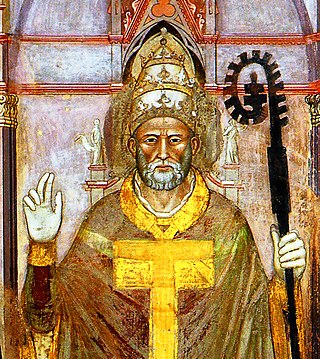
Pope Innocent VI, born Étienne Aubert, was head of the Catholic Church and ruler of the Papal States from 18 December 1352 to his death, in September 1362. He was the fifth Avignon pope and the only one with the pontifical name of "Innocent".
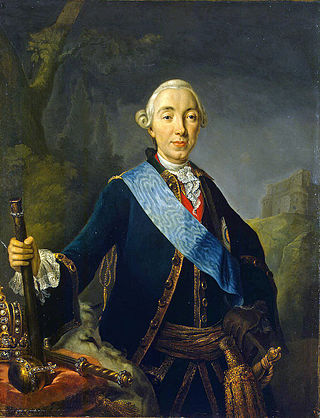
Peter III Fyodorovich was Emperor of Russia from 5 January 1762 until 9 July of the same year, when he was overthrown by his wife, Catherine II. He was born in the German city of Kiel as Charles Peter Ulrich of Schleswig-Holstein-Gottorp, but he was a grandson of Peter the Great and a great-grandson of Charles XI of Sweden.

Mikael Agricola was a Finnish Lutheran clergyman who became the de facto founder of literary Finnish and a prominent proponent of the Protestant Reformation in Sweden, including Finland, which was a Swedish territory at the time. He is often called the "father of literary Finnish".
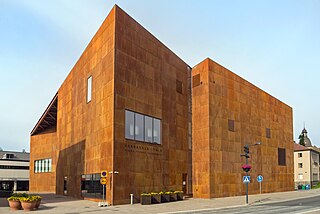
Kangasala is a town in Finland, located in the Pirkanmaa region. It lies to the east of the regional capital, Tampere. The population of Kangasala is approximately 33,000, while the metropolitan area has a population of approximately 417,000. It is the 35th most populous municipality in Finland.

Akseli Gallen-Kallela was a Finnish painter who is best known for his illustrations of the Kalevala, the Finnish national epic. His work is considered a very important aspect of the Finnish national identity. He changed his name from Gallén to Gallen-Kallela in 1907.
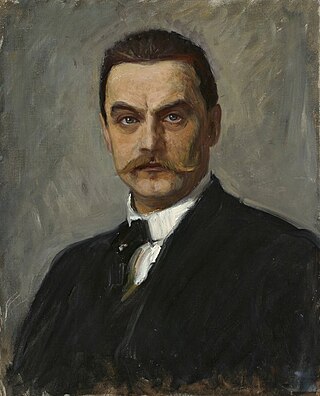
Albert Gustaf Aristides Edelfelt was a Finnish painter noted for his naturalistic style and Realist approach to art. He lived in the Grand Duchy of Finland and made Finnish culture visible abroad, before Finland gained full independence. He was considered the greatest Finnish artist of the second half of 19th - the first half of 20th centuries, and one of the most prominent contributors to the Golden Age of Finnish Art.
A joik or yoik is a traditional form of song in Sámi music performed by the Sámi people of Sapmi in Northern Europe. A performer of joik is called a joikaaja, a joiker or jojkare. Originally, joik referred to only one of several Sami singing styles, but in English the word is often used to refer to all types of traditional Sami singing. As an art form, each joik is meant to reflect or evoke a person, animal, or place.

Giorgio Giulio Clovio or Juraj Julije Klović was an illuminator, miniaturist, and painter born in the Kingdom of Croatia, who was mostly active in Renaissance Italy. He is considered the greatest illuminator of the Italian High Renaissance, and arguably the last very notable artist in the long tradition of the illuminated manuscript, before some modern revivals.

Karin Månsdotter was first the mistress and then the Queen of King Eric XIV of Sweden.
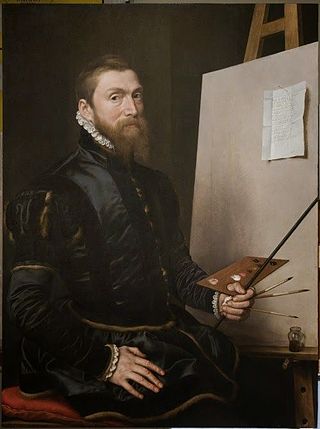
Anthonis Mor, also known as Anthonis Mor van Dashorst and Antonio Moro, was a Netherlandish portrait painter, much in demand by the courts of Europe. He has also been referred to as Antoon, Anthonius, Anthonis or Mor van Dashorst, and as Antonio Moro, António Mouro, Anthony More, etc., but signed most of his portraits as Anthonis Mor.
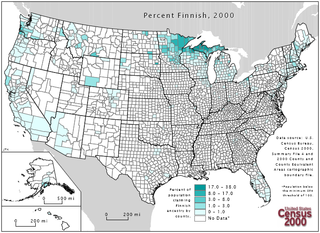
Finnish Americans comprise Americans with ancestral roots in Finland, or Finnish people who immigrated to and reside in the United States. The Finnish-American population is around 650,000. Many Finnish people historically immigrated to the Upper Peninsula of Michigan and the Iron Range of northern Minnesota to work in the mining industry; much of the population in these regions is of Finnish descent.

Pierre Mignard or Pierre Mignard I, called "Mignard le Romain" to distinguish him from his brother Nicolas Mignard, was a French painter known for his religious and mythological scenes and portraits. He was a near-contemporary of the Premier Peintre du Roi Charles Le Brun with whom he engaged in a bitter, life-long rivalry.

Mora is a locality and the seat of Mora Municipality in Dalarna County, Sweden, with 10,896 inhabitants in 2010.
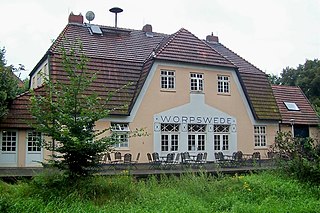
Worpswede is a municipality in the district of Osterholz, in Lower Saxony, Germany. It is situated in the Teufelsmoor, northeast of Bremen. The small town itself is located near the Weyerberg hill. It has been the home to an artistic community since the end of the 19th century.

Swedish art refers to the visual arts produced in Sweden or by Swedish artists. Sweden has existed as a country for over 1,000 years, and for times before this, as well as many subsequent periods, Swedish art is usually considered as part of the wider Nordic art of Scandinavia. It has, especially since about 1100, been strongly influenced by wider trends in European art. After World War II, the influence of the United States strengthened substantially. Due to generous art subsidies, contemporary Swedish art has a big production per capita.

Nils Dardel was a 20th-century Swedish Post-Impressionist painter, grandson to famous Swedish painter Fritz von Dardel.
Thomas is the first known bishop of Finland. Only a few facts are known about his life. He resigned in 1245 and died in Visby three years later.
Jakobsson is a surname of Icelandic or Swedish origin. It may refer to the following notable people:
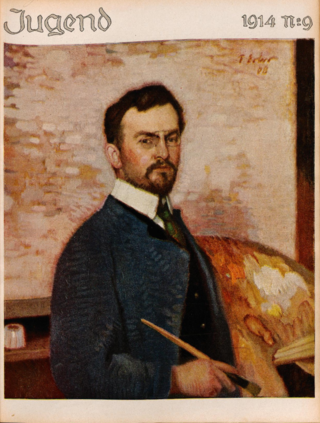
Fritz Erler was a German painter, graphic designer and scenic designer. Although most talented as an interior designer, he is perhaps best remembered for several propaganda posters he produced during World War I.
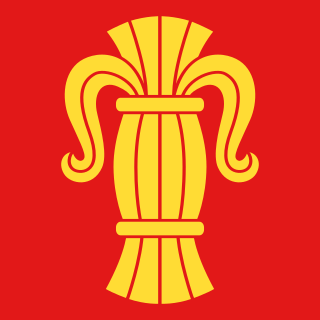
Vaasa, in the years 1855–1917 as Nikolainkaupunki, is a city in Finland and the regional capital of Ostrobothnia. It is located on the west coast of the country, on the Gulf of Bothnia. The population of Vaasa is approximately 69,000, while the sub-region has a population of approximately 110,000. It is the 14th most populous municipality in Finland, and the tenth most populous urban area in the country.
















